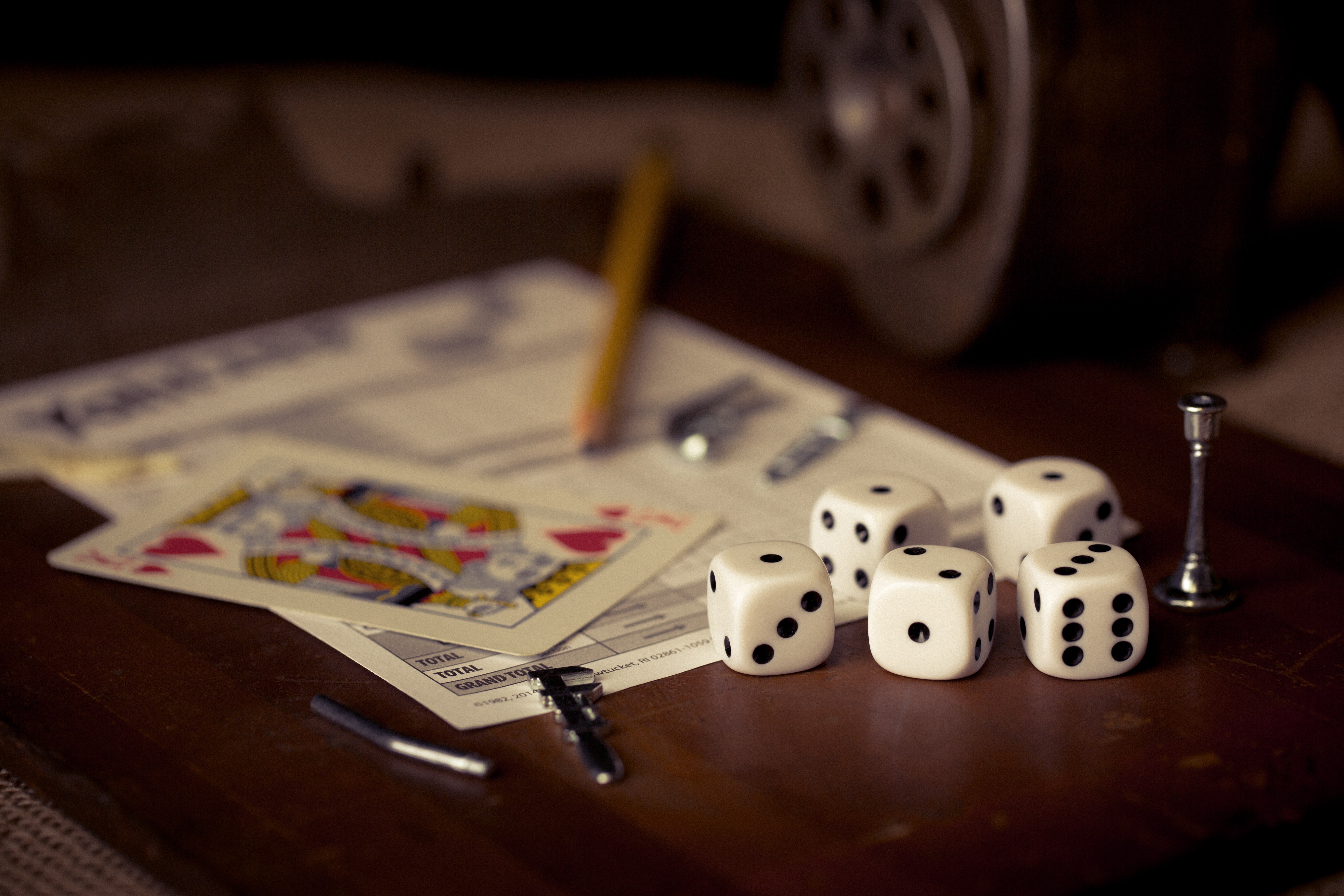
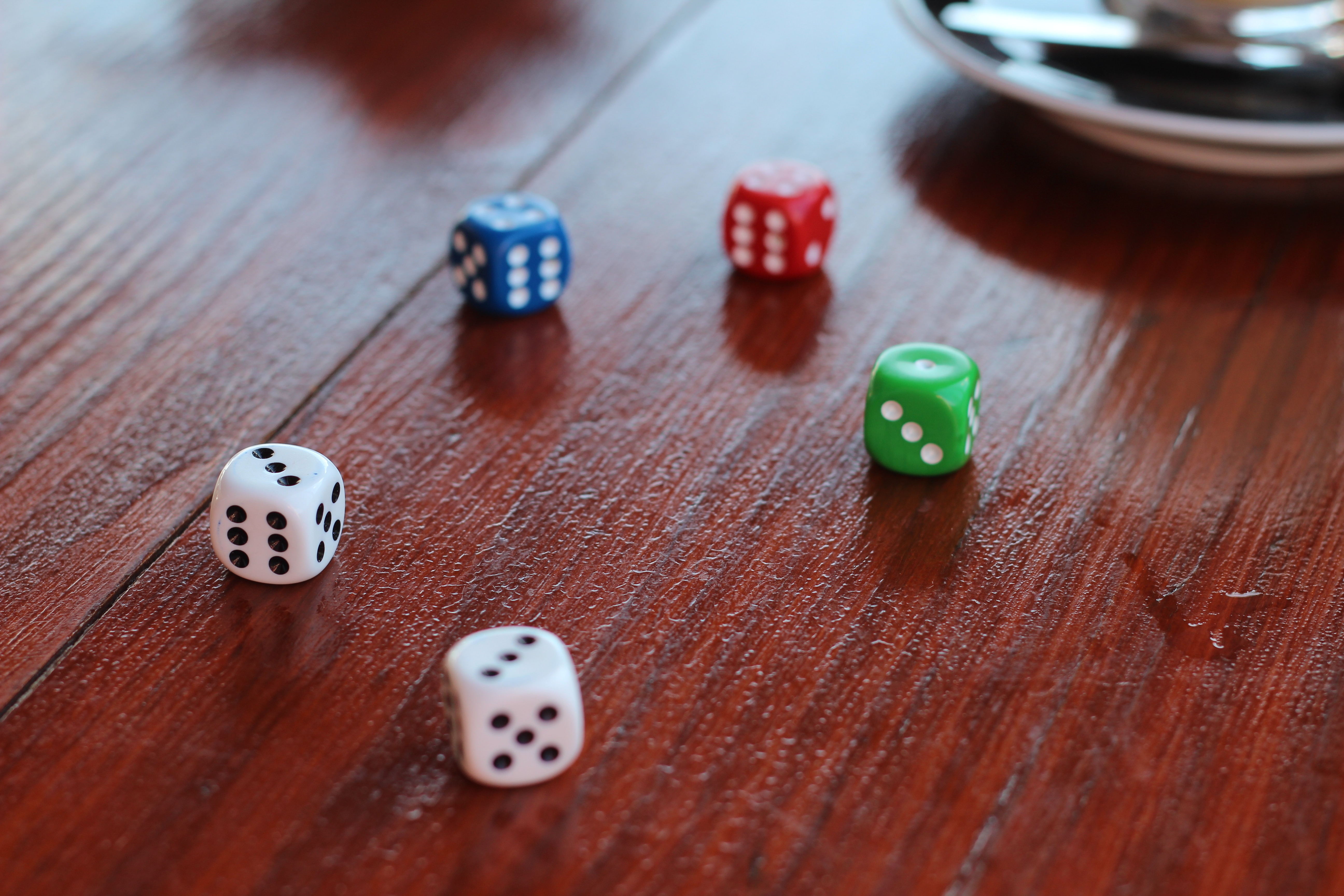
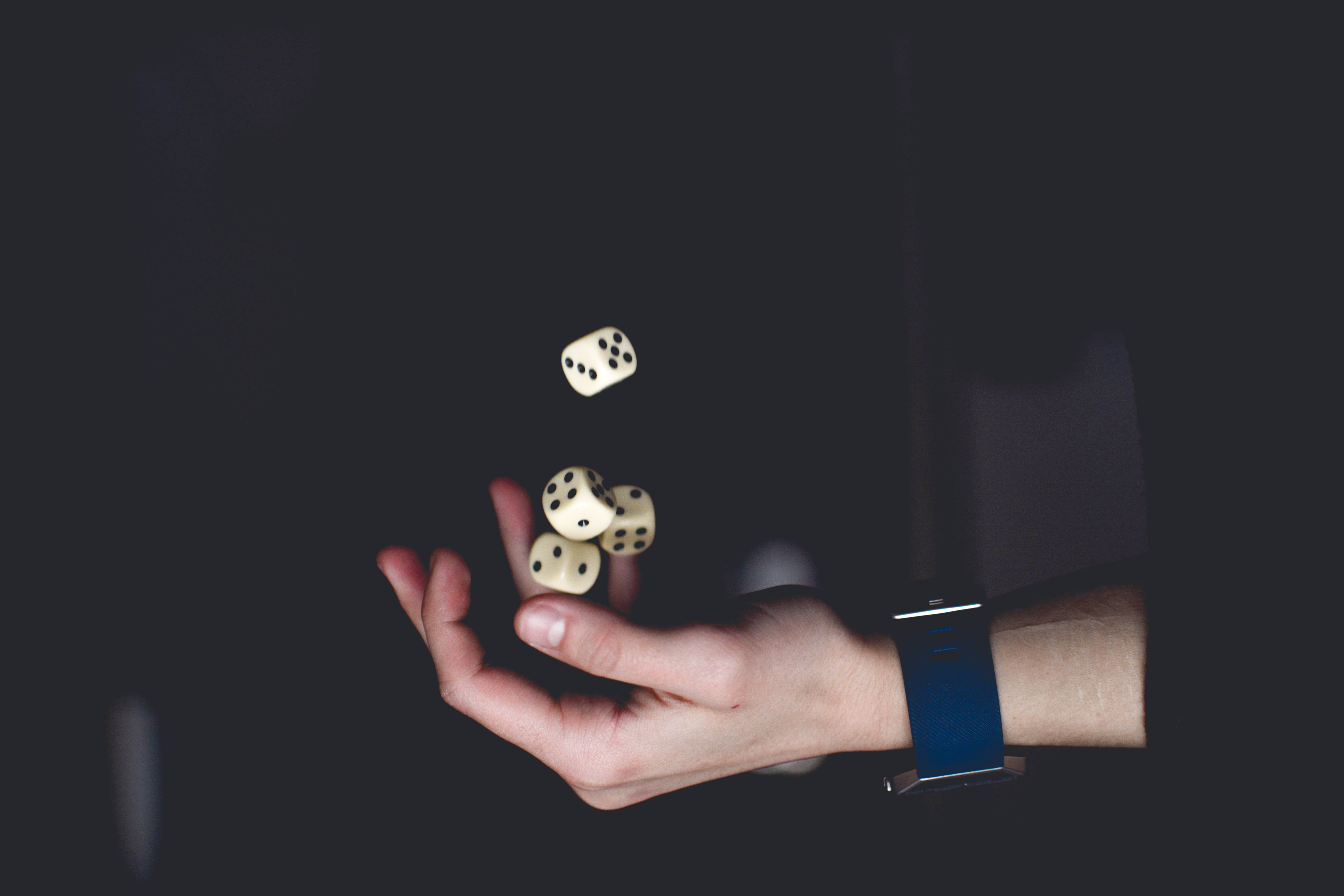
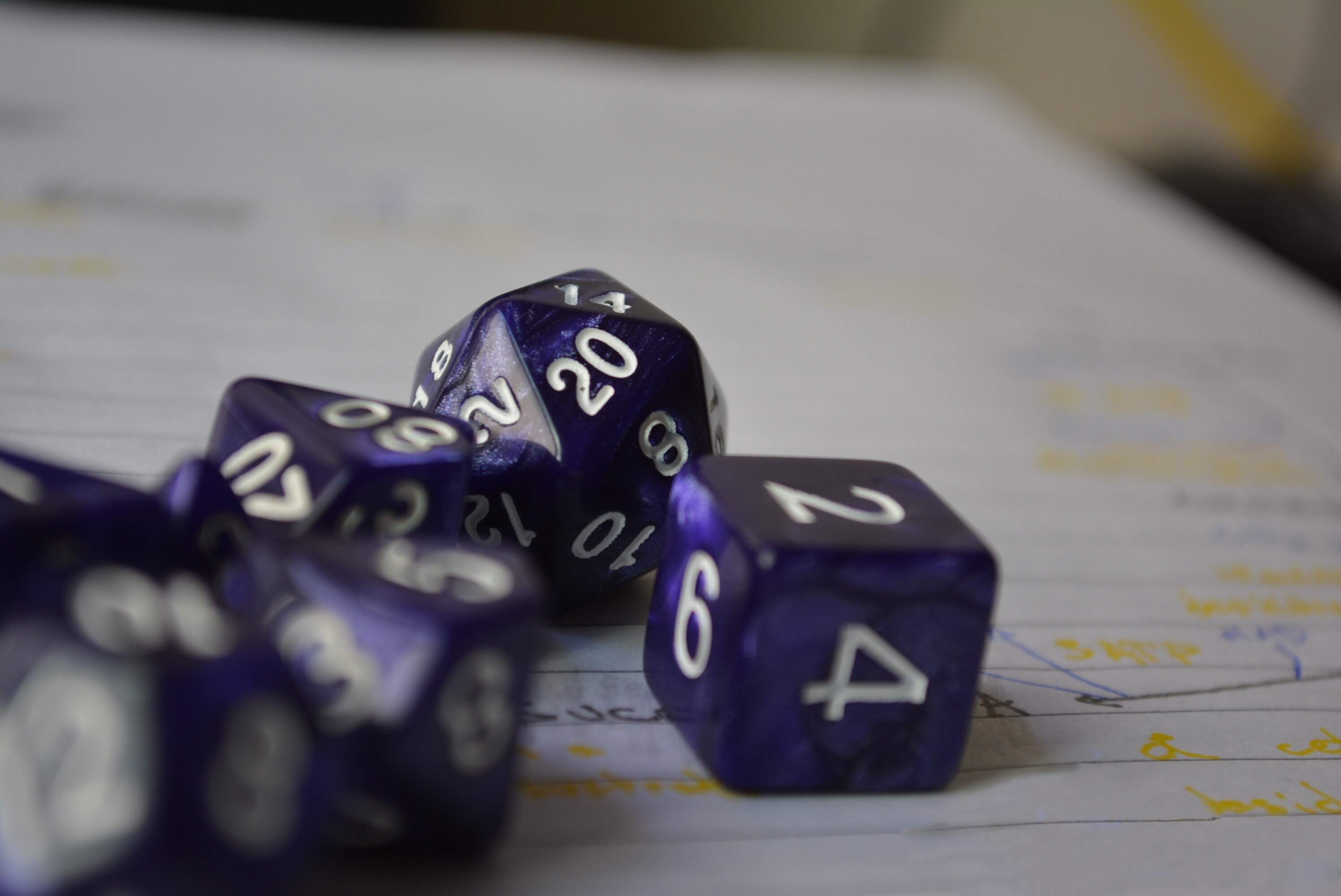

It will be drawed who starts, because the beginner has a not to be underestimated advantage. The Ones count either 1 or 100, sixes count either 6 or 60, all other numbers count normal. The three dice may be rolled a maximum of three times. If the first of a round leaves the dice after his first roll, everyone in the round may also roll only once. If he stops after the second throw, the followers are allowed to flip the dice cup at most twice.
After a roll, you may throw out one or more dice. There is no compulsion to throw dice, but what has been put once must not go back into the cup. The player who starts decides what to score, whether they are worth 100 or 60, or 1 and 6, and whether they are high or low, this means whether the others have to roll higher or lower to exceed the throw, because each successor has to roll more than his predecessor. The starter can also say sixes count 60, but singles count 1, e.g., if he has not thrown a one but a 6.
If you score two sixes in the first roll, you can convert them into a 1. A 6 is turned to the 1, the other 6 must be back in the cup. The highest litter are three ones. This litter is called Chicago and won immediately. The lucky player usually gets out of the round and has nothing to do with the loser’s (who often has to do a round in the pub) play-off.
Dice Values:
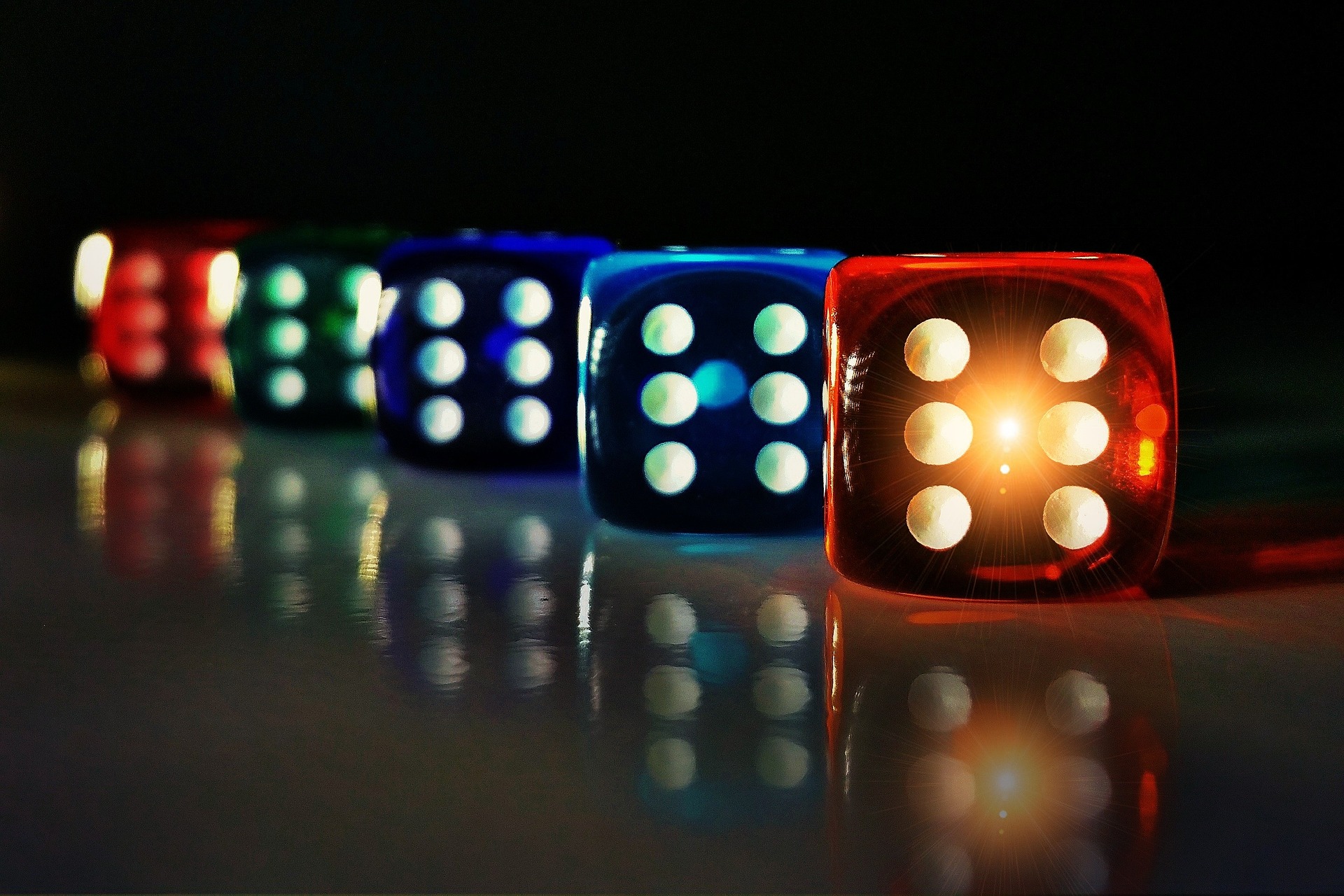
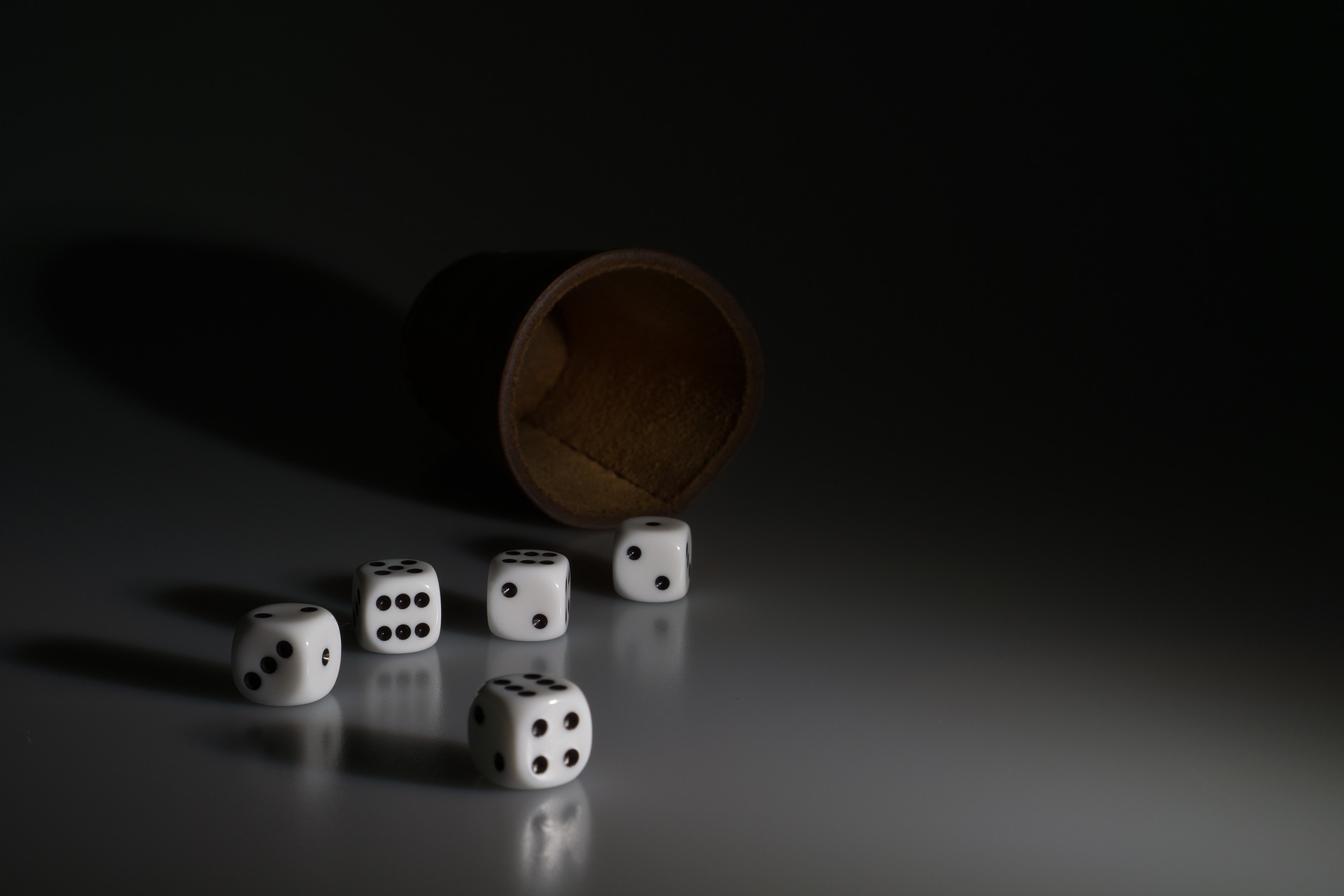
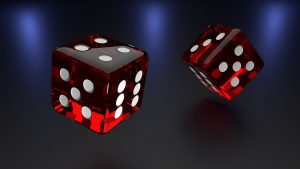
Each player is assigned a playing field. The field has six columns and twelve rows. The first field goes to the player sitting to the left of the clerk. The award will continue in a clockwise direction.
The players roll in turn, whereby each player may first perform a maximum of three throws per turn. There are six dice with the numbers 1 to 6. The goal of the game is to be the first six times the numbers from 1 to 12 have completely thrown. The score is recorded for each player in his playing field in which a cross is entered for each number. Starting at the number 7, the number of points is summed by exactly two cubes.
The player must first always play with all dice, but after one of his three throws (after which, it is optional) set to a certain number. To do this, he pushes aside the dice that he has used to make that number, and rolls (if he still has litters) with the remaining ones. If the same number was then scored again with other dice, these are also set aside and may not be used in the next roll. If you have decided on a number, this decision is final for each round.
If all the dice in a round (or even a single throw) are usable for the desired number, or if this number has been scored six times after the round or the throw, and thus is no longer necessary, then the player is again in turn for three throws. It does not matter if you do not need the number after the litter, if you do not need that number as often as it is available.
If two or more players are done in the same round, the knock-out decides with two dice; the higher number of points wins. The copy may be necessary several times if the same numbers appear. For more than two players, however, only roll the dice those who are equal.
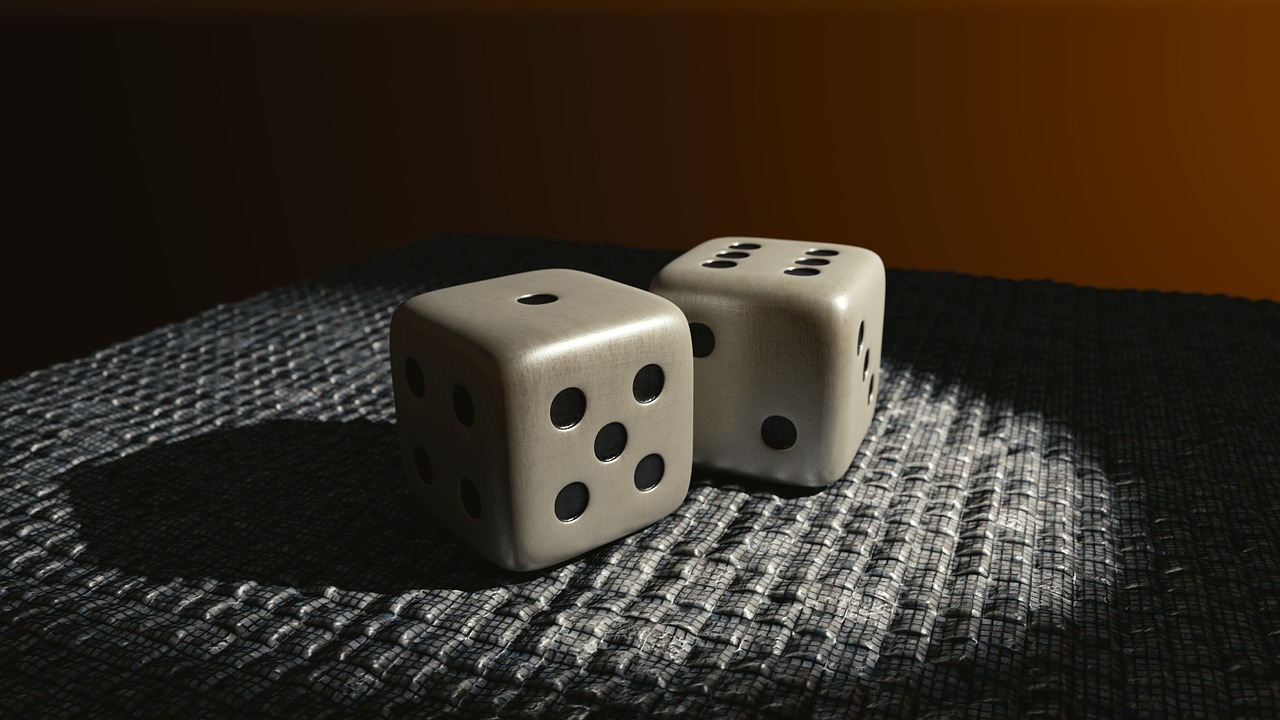
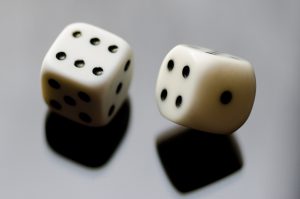
The game is played in turn. Each player rolls three times and must decide immediately at which point of a three-digit house number he wants to place the thrown value. He then defines the hundred, ten and one digit of the number. After the three throws it is the turn of the next player. The winner is the player who made the highest house number. Strategically, it makes sense to place a fallen at the top of 1 last and a 6 in the first place, the decision is more difficult in medium throw numbers like 3 or 4.
In the variant low house number is tried by the players to reach the lowest house numbers.
In the hidden house number, the player must decide blindly, at which position of his house number the throw is placed. Only then can he lift the dice cup.
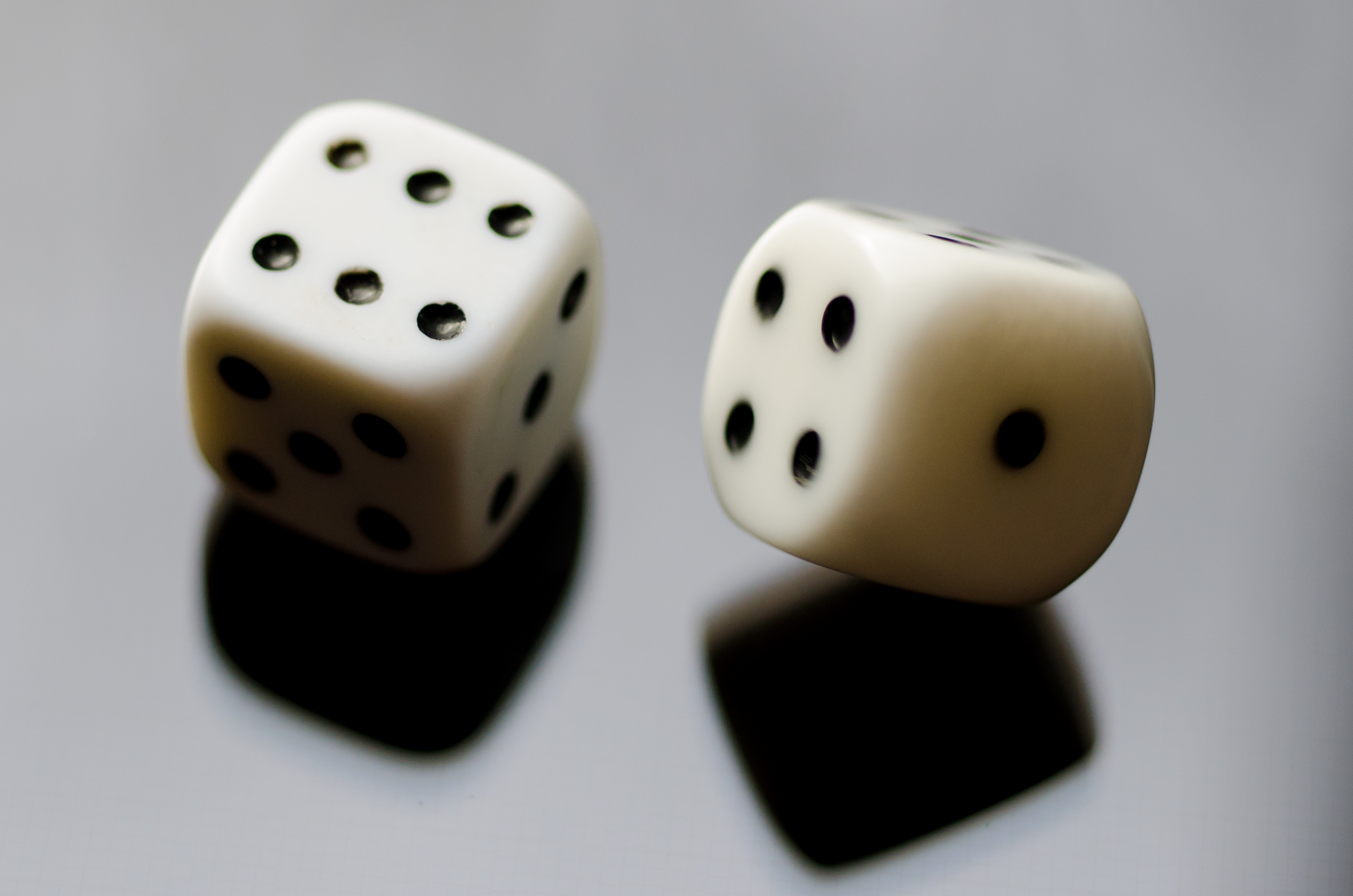

Makao is a game in which the players in their throws must reach a certain value and must not exceed.
The game is played in turn. Each player rolls the dice as often as he wants and tries to get as close to the dice sum nine as possible. Any player who rolls more points is “dead” and eliminated. The winner is the player who comes closest to the number without crossing it or hits it exactly.
The target sum can be varied, in the game Fifteen, it is set at the same rules to 15 points. At over 12 is dead, the sum to be reached is the twelve and the players have to roll three times each, then they can volunteer a fourth throw.
As with similar games, the tactics and risk-taking of the players is crucial. The later players in a round also have the advantage of knowing the other players throws and can make their decision regarding additional litters dependent on them.
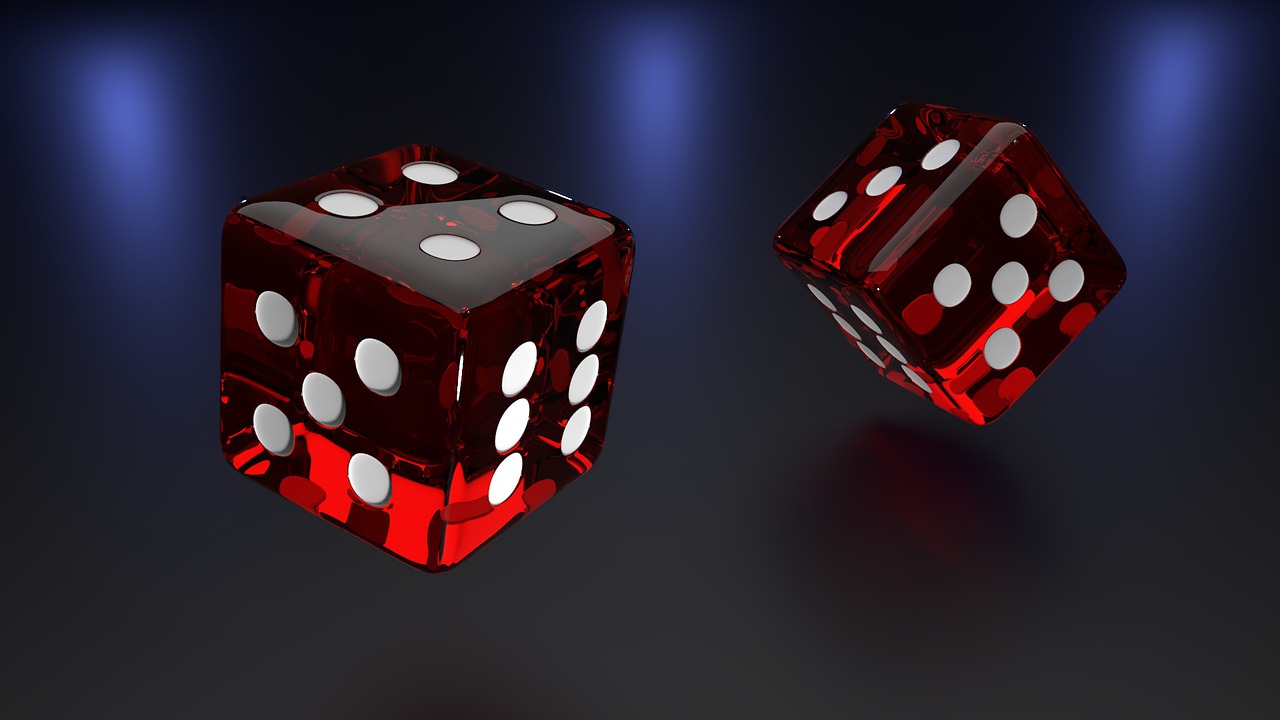
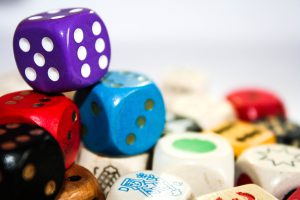
The game is played in turn. Each player rolls a total of six times and tries to throw the same number of points as the throw. It should therefore be rolled on the first throw a one, the second a two, etc. The successful throws are added, the rest expires. Loser is the player with the fewest and winner with the most points. In a tie wins the player who can prove the highest single throw.
In the variant Mariechen von hinten the same rules apply, however, here should be thrown at the first throw a six, a second second five, etc.
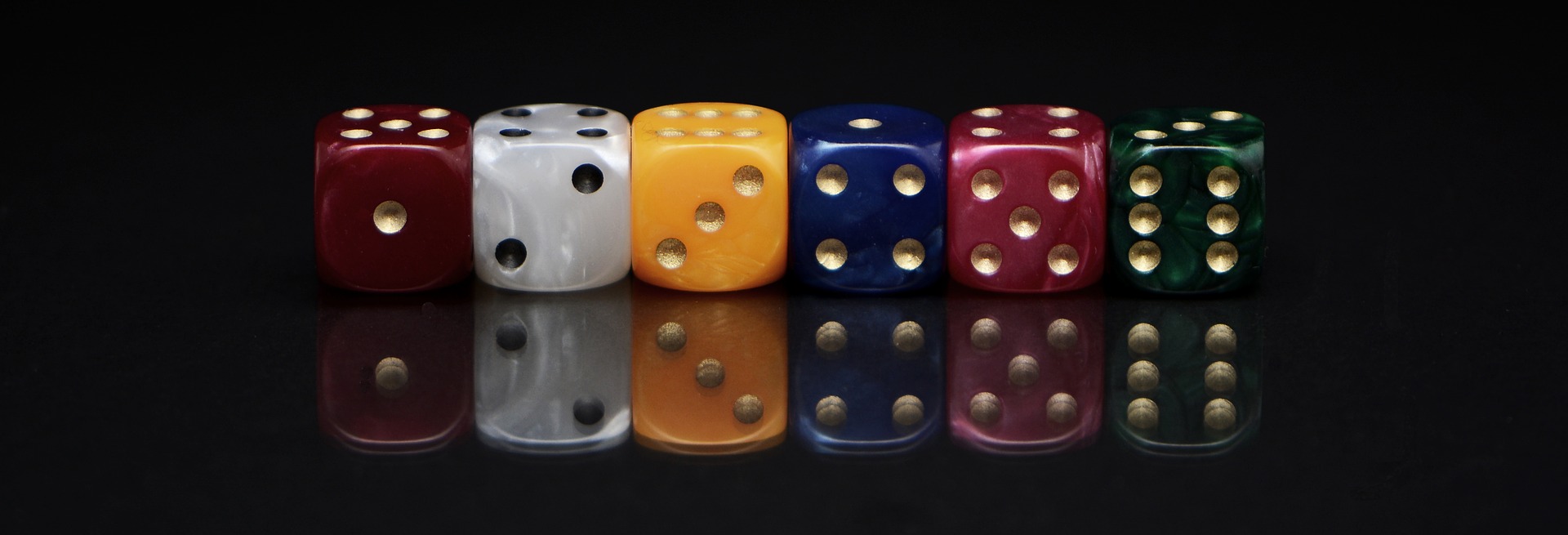


Each player gets in advance a piece of paper and a pen and notes among themselves the numbers one to ten, followed by a multiplication sign. The actual game is played in turn.
Each player rolls one dice at a time and writes the dice result behind any mark and multiplies it by the number there. He tries to achieve the highest possible score with each throw; a high number of dice, for e.g. a six, should therefore be multiplied, if possible, by a fairly high number on the slip. After ten rounds, the results of all calculations are added together, the player with the highest total score wins the game.
In the six-game only the numbers one to six are noted and each player has only six throws, which he must assign to the multipliers. Again, the player with the most points wins.
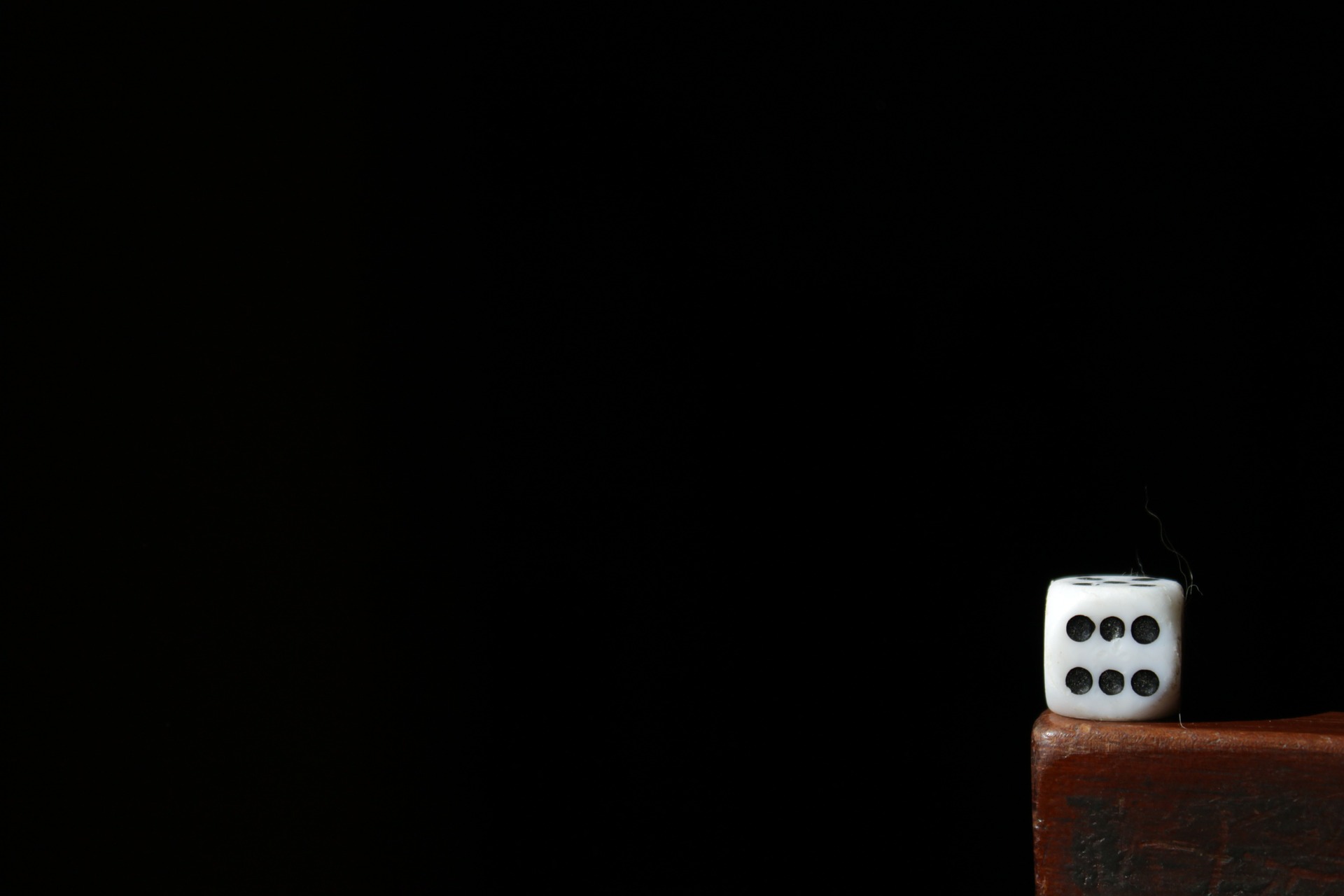

The game is played in turn. Each player may roll the dice until the total amount of his rolls reaches or exceeds the sum of 22 points. Players who are over 22 retire. The winner is the player who reaches 22 or is the next to reach them. As a tightening rule is that players who choose a fourth litter, are required to make a fifth.
In the variant Fifteen, the same rules apply as in Twenty-two, but this is the sum of 15 points to achieve.
Makao works on the same principle, but here you can not exceed the sum of nine.
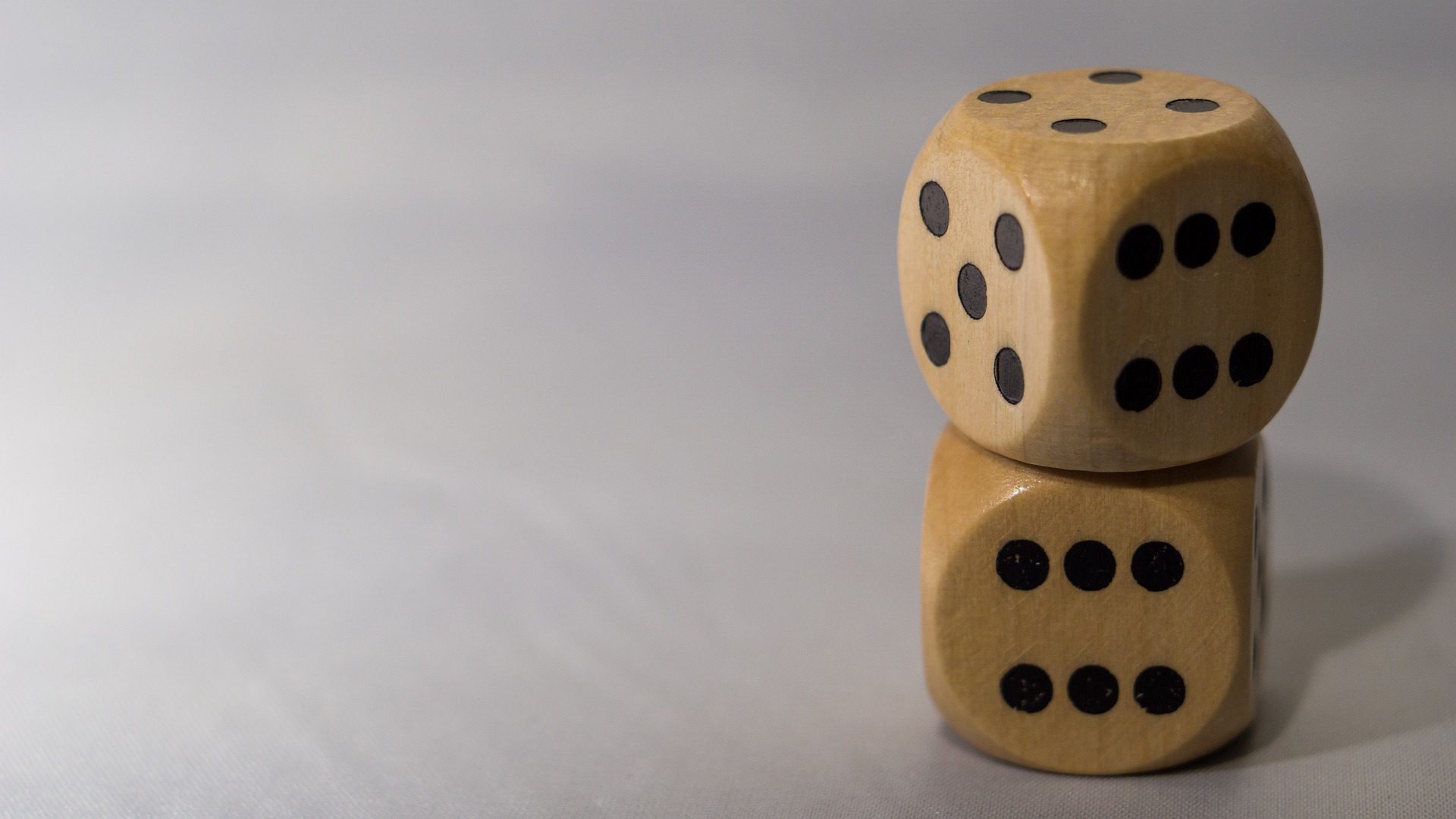

This dice game comes from France. It is played in turn with a dice. Everyone is allowed to do so until he has reached a total of fifteen eyes (or one close to fifteen). Anyone who has the misfortune of bringing together sixteen eyes will be eliminated.
The joke of this game lies in the difficult decision before the last litter. For example, if you have thrown a three, a five, and a six, fourteen in total, you can not count on the last to score one. So it’s better to give up. The winner is who first fifteen eyes rolled.
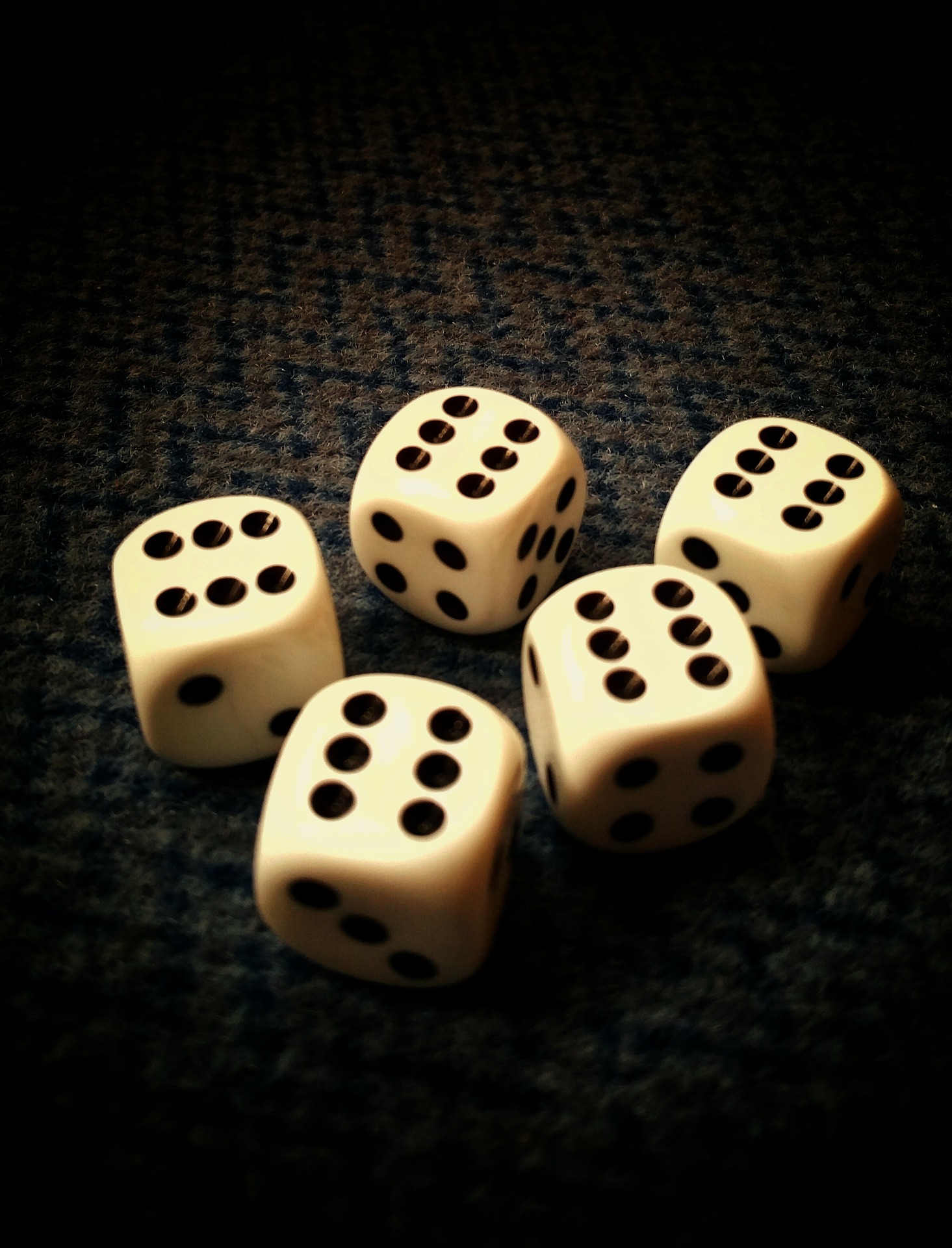

The game is rolled in turn. The players try to throw the values 1 to 6 in the correct counting sequence as fast as possible. Once a player throws a one, it is recorded; in the following round he tries to throw the two and so on. If a player throws all numbers from 1 to 6, the order reverses, and starting with another six, he tries to come back to the one and discards the rolled numbers. The winner is the player who first rolled all numbers and then struck again.
In the variant dumb Jule may not be spoken during the game. A player who talks anyway has to start from the beginning.
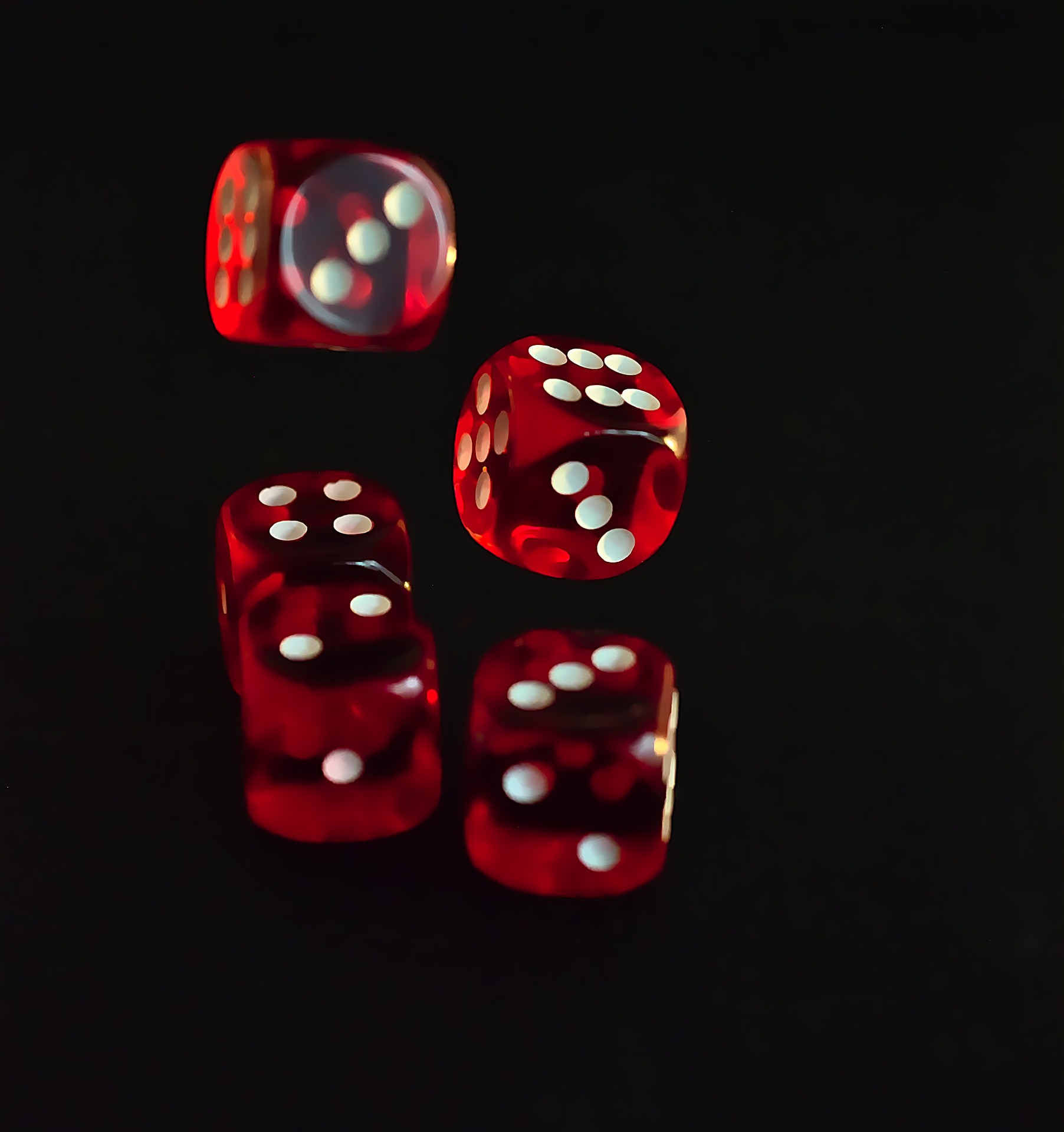
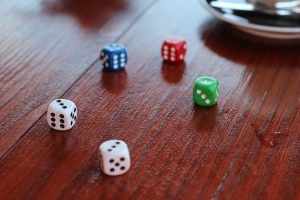
Each player gets in advance a piece of paper and a pen. In a first round of the game each player rolls in turn his personal lice number and notes it on his piece of paper (according to other rules, this number can also be selected) Then it is always rolled in rows and always when a player rolls his “lice number”, he may add a line to a lice drawing on his slip. The lice picture is ready, if the player could roll a total of twelve times his lice number and thus could add twelve elements to the picture (according to other rules 13).
When dice houses is played with the same rules, but the result in this case is a house. The game is also transferable to other motifs, which consist of a fixed number of elements. Frequently mentioned are mice, cats or stick figures.
In another variant, no louse or lucky number is determined in advance. In this case, strokes are made according to the number of points of the dice, the probes may be drawn together and only at a two. In this case, the player who throws the highest number of lice in a set time wins.
In games with stakes, the losers must each hand out tokens (or coins) according to the number of missing items. As variants, it can be agreed that a player may roll a dice one more time at each throw of the louse and/or, and in each case throw out the opposing number once.
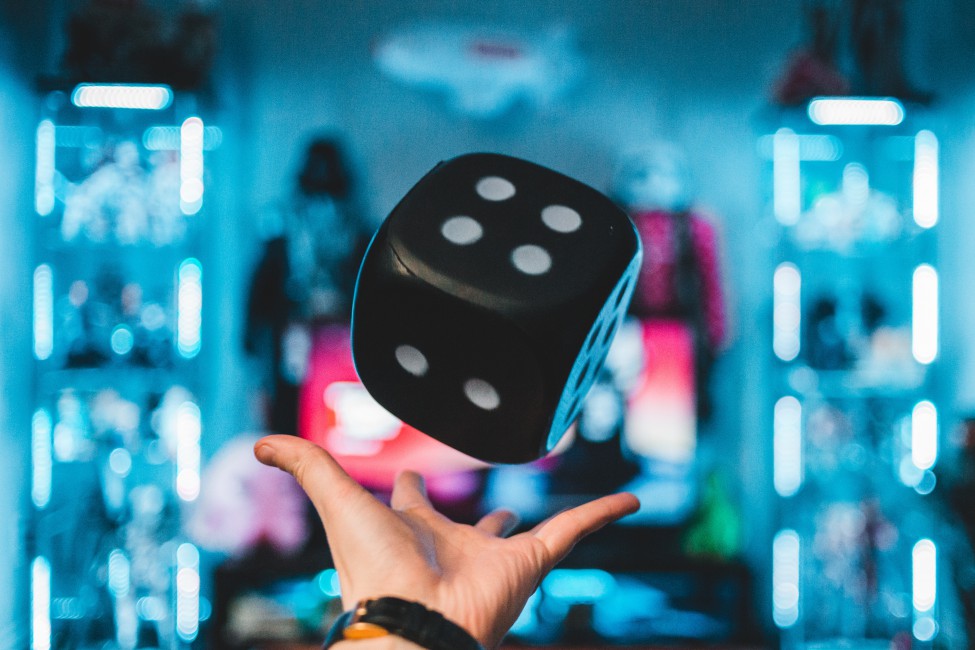

The game is played with 3 dice. Everyone puts 5 of his tokens into the cash register. Who – with one throw – exactly 12 eyes throws, may empty the cash register. But who throws 13, must double their content! If you stay under 12 or roll over 13, you have to put the difference between his number and 12 into the cash register.
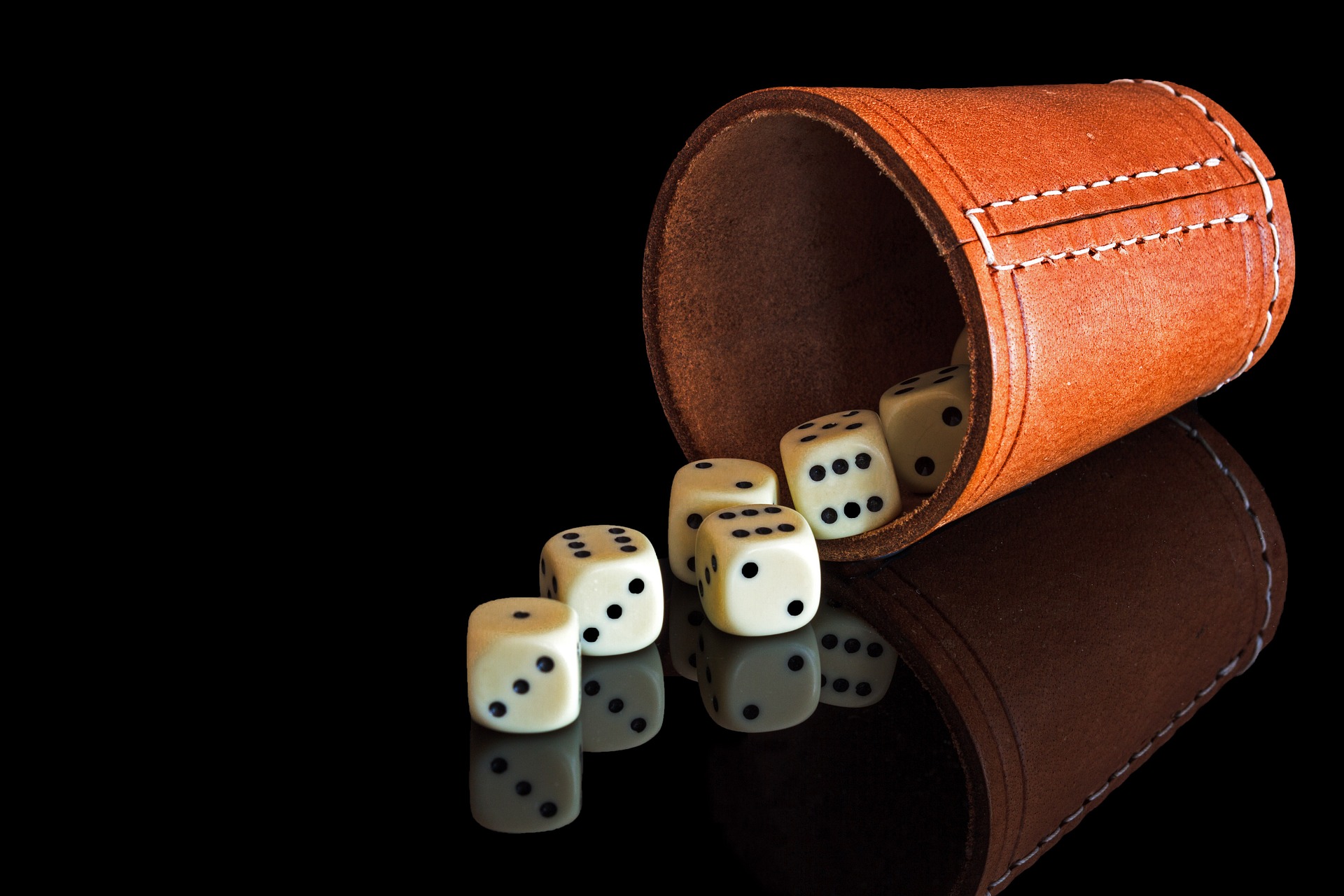

It is rolled with three dice and the leather cup in turn. Each player gets ten matches. If one of his three dice shows the number one, he has to hand over a token to his right neighbor. In a two, a match goes to the left neighbor, in a six, a match has to be put into the cash register. If you’re unlucky, you’ll get rid of three pellets on a roll (with the numbers one, two and six). All other values do not apply to this game. If a player has only two or one piece of wood, he must first satisfy the claim of the neighbor with the higher number of points.
If you do not have any more matches, you roll out the dice until he gets another supply of matches from one of his neighbors. There is no winner in this game. Who has lost another match, while everyone else has already deposited their pieces of wood in the cash register.
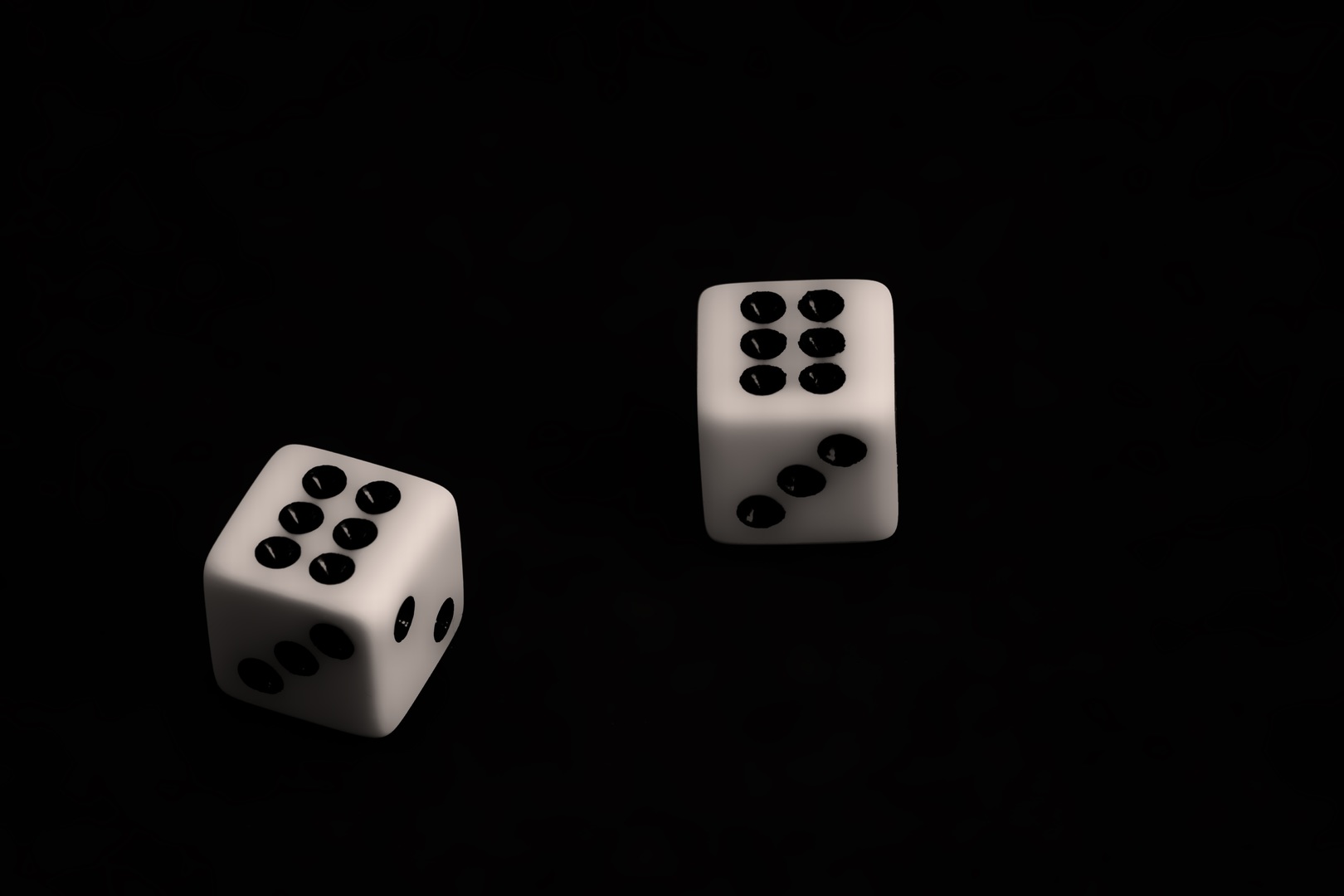
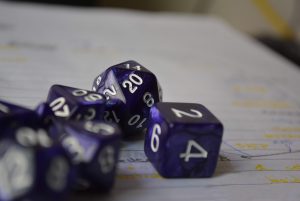
Dice house number is for any number of players.
In this game with 3 dice, whoever throws the highest 3-digit number wins. Each player has 3 casts; in each case the highest number of points is written down and in ascending order, so that the highest number is always in front.
Whoever throws the highest number in this way is the winner.
Another variant of this game:
Before the start of each round of dice, it is determined where the next number should be. There can be quite funny surprises. if, instead of the hoped-for victory, the highest number of all 3 rounds is at the end.
Conversely, of course, the lowest house number can also be rolled. Here the lowest number of dice is written down. The winner is who has reached the lowest 3-digit number.

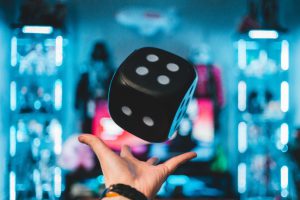
In this dice game, which is played with 3 dice, it is important to reach the number 21 in 3 throws. If you have come quite close to the victory number with the first roll, the player only needs to use 1 or 2 dice. Each player has to roll 3 times, but you can try it a fourth time if necessary.
However, once a player is over 21, he has to leave.
The winner is, who has reached exactly 21 first. If no one could exactly roll the target, whoever came closest to the target wins.
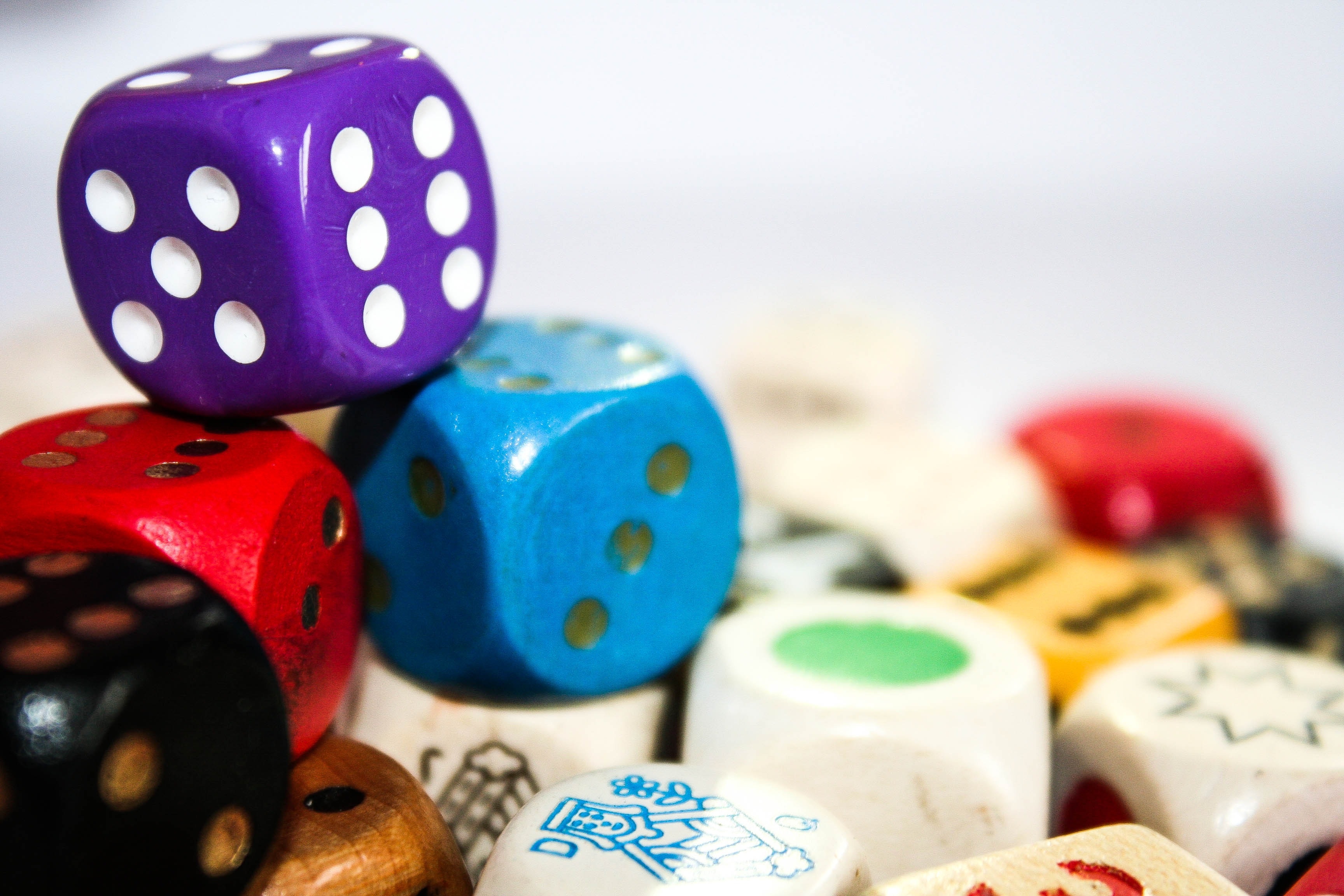

Here you have to reach the numbers 13, 14 or 15 with 3 dice. After each throw, the dice may be turned over, and in each case the lowest side upwards. Each player has 3 throws to reach the correct number.
In this puzzle game you can achieve a lot with a combination, because the opposite numbers of a cube always complement each other. a 6 and a 2 and 4, you just need to turn the 2 over; the 5 and: 6 + 5 + 4 = 15 appear.

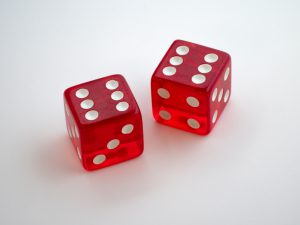
Pasch means a throw with 2 dice, which have the same number of points. If three dice show the same number, this is called a double Pasch. However, only the eyes of a Pasch are counted. However, if a player scores double pasch in a round, he always wins, even if his actually scored number is smaller than that of his teammates
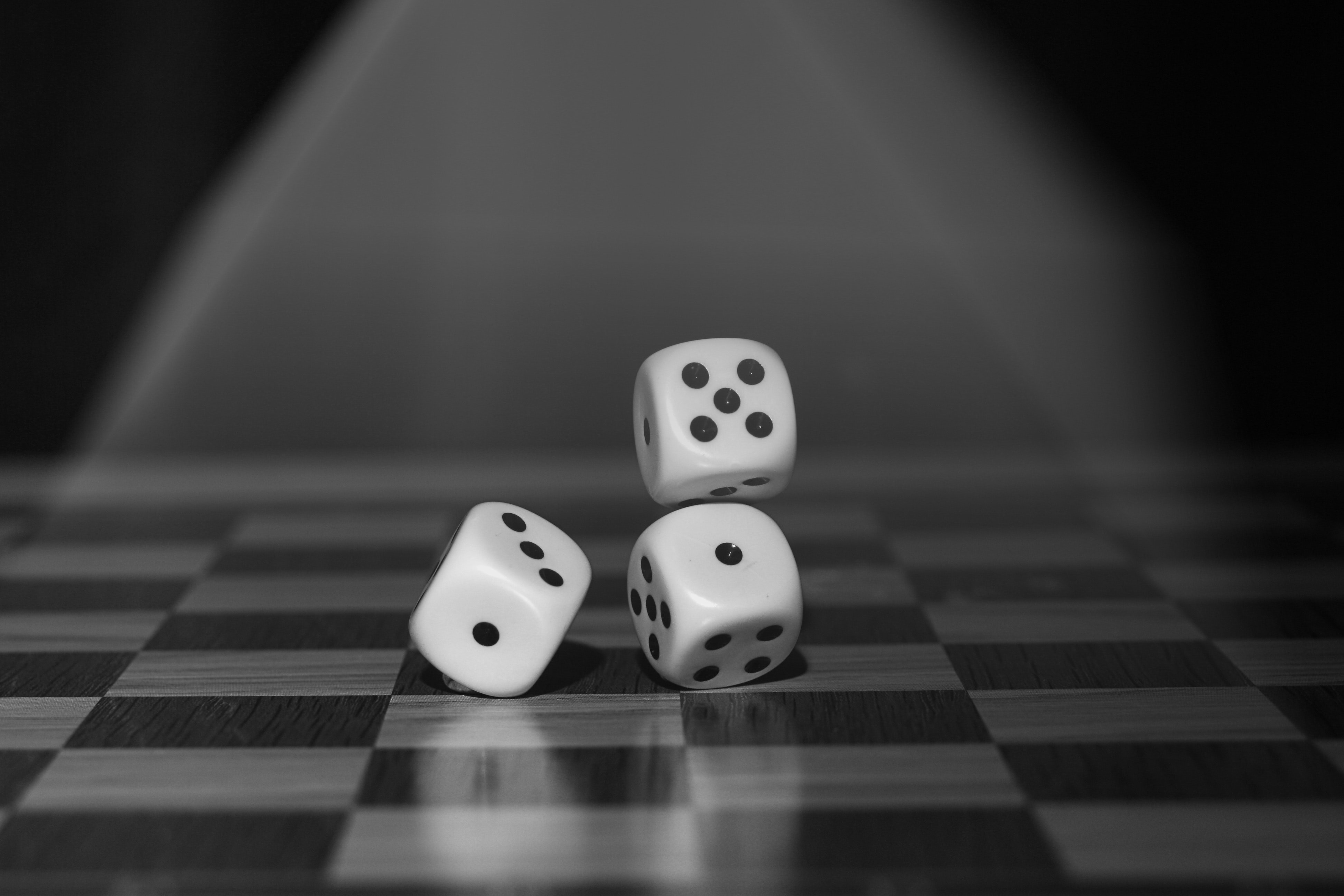
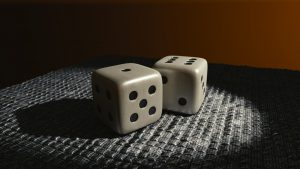
Each player has 3 throws. The one who rolls the most eyes is loser.

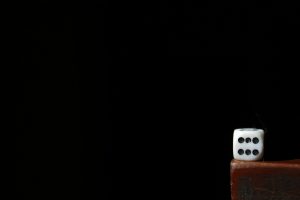
It is played with 3 dice. You may roll three times on each round. Only the numbers with diagonal figures are counted: three and five. Whoever reaches the highest score is the winner.

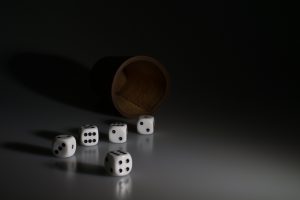
For 2 players.
Alternately, you roll with 3 dice until one of the two players has scored a six. The six-cube is left behind and you have to try to achieve the highest possible supplementary number when rolling twice. The winner is who has reached the highest number after the first round.
This dice game requires – besides luck – also fast decision. If you have The first time a six is thrown and the fifth time a five and a two, the player has to consider whether he wants to leave the five and only want to improve the two or if he tries his luck on the last roll with both dice.

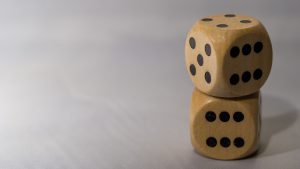
It is played in turn with 2 or more dice. Only even numbers are counted, which are added together after each round.

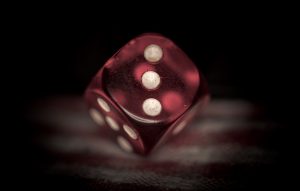
It is played in turn with 2 or more dice. Only odd numbers are counted, which are added up after each round.

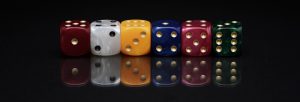
Talking is forbidden in this dice game. If you do it anyway, you have to start from the beginning. The game is played with 1 dice and each player receives paper and pencil.
As soon as a player rolls a one, he writes that down on his piece of paper. The next time he rolls a 2, he writes it below – and so on until 6.
Then the numbers are struck in turn with appropriate throws. Who could first delete all numbers, is the winner.


It is thrown in turn with three dice. If it’s your turn, you can roll three times. Only sequences or series are counted, for e.g. numbers in the normal order of numbers: 1-2-3, 2-3-4, 3-4-5, 4-5-6. Who has reached the highest number, is the winner.
It can be agreed that after the first or second throw of a player two or a dice may remain on the table and only with one or two dice is rolled on.
